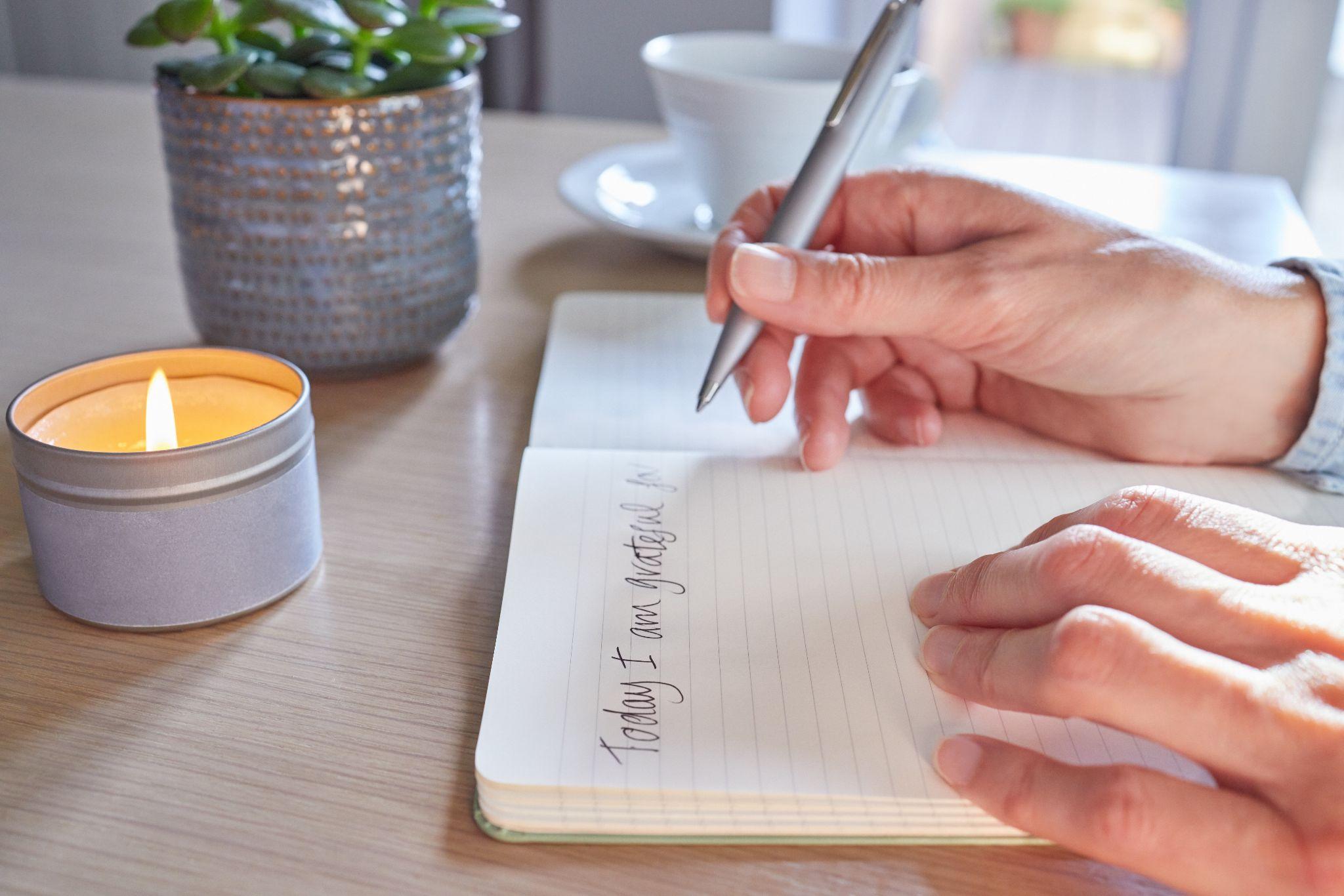
Our Addiction Resources
Navigating the world of addiction and recovery can be overwhelming. We’re here to provide clear, compassionate education and guidance. From practical advice for maintaining sobriety to informational guidance on the long-term effects of substance abuse, our content is a beacon of hope and understanding.
Our Team is Ready are ready to take your call
Call us Today!
or we can call you. Fill out form below
Our Blog

How to Help Your Partner in Addiction Treatment
When your partner is navigating the challenging path of addiction treatment, your support becomes a source of hope and strength. Understanding how to offer this support effectively is crucial for those in addiction recovery.
Partner struggles are a normal aspect of relationships, and this guide is tailored to help create strength between you and your partner, whether you’re just beginning this journey or looking for ways to improve the support you’re already providing.
Supporting Your Partner
Supporting your partner through addiction treatment is a pivotal aspect of their recovery journey. It’s more than just a gesture of love, it’s a crucial component of their success.
Addiction can strain the strongest bonds, creating feelings of isolation and despair. By offering your unwavering support, you provide a sense of hope and belonging that is often lost in the throes of addiction.
This support manifests in various ways, from encouraging them to seek and continue treatment, to providing a listening ear or a shoulder to lean on during tough times. It also involves setting healthy boundaries and educating yourself about the nature of active addiction to better understand the challenges your partner faces.
Your support can illuminate the darkest steps of this path away from substance abuse, making the journey toward recovery a shared endeavor rather than a solitary battle. This not only aids in healing but also strengthens the bond between you, fostering a deeper connection and mutual respect.
Supporting your partner in addiction treatment is, ultimately, a profound act of empathy and compassion that can make all the difference.
Ways to Support Your Partner During Treatment
Supporting your partner through the process of addiction treatment requires patience, understanding, and active engagement. Here’s how you can provide meaningful support:
1. Communicate Effectively
The foundation of support is built on effective communication. It’s about creating a safe space where your partner feels comfortable sharing their struggles and victories without fear of judgment.
Open, honest dialogue can help break down walls of misunderstanding and build trust. Encourage your partner to express their feelings and needs, and listen actively. If you find that you and your partner are struggling with this, couples therapy can improve mental health and behavioral health to support the relationship.
This means giving them your full attention, acknowledging their feelings, and responding thoughtfully. Communication is equally about listening and understanding.
2. Educate Yourself
Addiction is a complex and often misunderstood condition. By educating yourself about its intricacies, you’re better equipped to provide the support your partner needs.
This includes understanding the physical and psychological aspects of addiction to alcohol or drugs, the process of recovery, and methods to face triggers for relapse prevention.
Knowledge empowers you to offer informed support, anticipate potential issues, and communicate more effectively with both your partner and their healthcare providers.
3. Encourage Treatment
One of the most significant steps you can take is to encourage your partner to seek and continue with their treatment. This encouragement should be gentle and supportive, rather than forceful or coercive.
It’s important to approach this subject with empathy, understanding that your partner may have fears or reservations about seeking help. Discuss the benefits of treatment and express your commitment to support them throughout the process.
Offer to assist with practical steps, whether it’s researching treatment options, making appointments, or simply being there as a source of emotional support.
4. Be Patient and Understanding
Recovery is a journey with its own set of ups and downs. It requires patience and understanding from both the individual undergoing treatment and their support network.
Acknowledge that there will be challenges and setbacks, but view them as part of the recovery process rather than failures. Celebrate the small victories along the way, and maintain a positive outlook on the journey ahead.
Your patience and understanding can provide your partner with the strength they need to continue their path towards recovery.
5. Take Care of Yourself
Supporting someone through addiction treatment can be emotionally taxing. It’s crucial to remember that taking care of yourself is not selfish, it’s necessary.
Engage in activities that replenish your energy and bring you joy. By maintaining your own well-being, you’re in a better position to offer sustained support to your partner.

Tips for Navigating the Journey Together
Set boundaries. Establishing clear boundaries is essential for maintaining a healthy relationship and supporting recovery. Boundaries help define what is acceptable and what isn’t, protecting both partners from behaviors that can hinder recovery or cause emotional harm.
It’s important to have open discussions about these boundaries, ensuring they are realistic and mutually agreed upon. For example, you might set boundaries around substance use in the home, financial responsibilities, or how to handle relapses.
Boundaries should be set with love and respect, aiming to support the recovery process and safeguard the well-being of both partners.
Build a support network. Recovery can be a lonely journey if faced alone. Building a support network of friends, family, and support groups can provide both you and your partner with additional resources and emotional support.
For the partner in recovery, attending group therapy or meetings like those offered by Alcoholics Anonymous or Narcotics Anonymous can provide community and understanding for those with similar experiences.
For the supporting partner, Al-Anon and Nar-Anon are support groups that can provide a space for friends and family members of those dealing with substance abuse to connect with others dealing with a similar situation.
Celebrate progress. The road to recovery is filled with small milestones and victories that deserve recognition. Celebrating these moments can significantly boost morale and motivation for both partners.
Acknowledge achievements such as attending therapy sessions, reaching sobriety milestones, or simply engaging in healthy coping mechanisms during stressful times. Celebrations can be as simple as a heartfelt conversation acknowledging the progress, a small gift, or a special meal.
These celebrations reinforce positive behaviors and remind both partners of the progress being made, even when the journey feels difficult.
Maintain open communication about needs and feelings. Keeping the lines of communication open regarding each partner’s needs and feelings is crucial. Recovery can change dynamics and needs within the relationship, so regular check-ins can help both partners feel supported and understood.
This includes discussing emotional needs, any changes in the relationship dynamic, and how both partners can support each other better. It’s also a time to voice any concerns or challenges faced, ensuring that both partners are working together to address them.
Practice self-care and encourage your partner to do the same. Self-care is vital for both partners. Encourage your partner to engage in activities that promote well-being, relaxation, and a sober space such as exercise, meditation, or hobbies.
Similarly, make time for your self-care practices. This mutual focus on well-being helps reduce stress and promotes a healthier lifestyle for both partners, supporting the overall recovery process.
Find Relationship Support With Lumina Recovery
Supporting a partner through addiction treatment is a profound expression of love and commitment. It’s a journey fraught with challenges but also filled with opportunities for growth and deeper connection.
Lumina Recovery offers individual, group, and family therapy where we work on fostering healthy relationships. Remember, professional help is always available, and reaching out can make all the difference. Together, you can navigate the path to recovery and build a healthier future.
To learn more about our services, don’t hesitate to reach out to us today.

How to Mend, Make, and Maintain Relationships in Recovery
People in recovery from substance use disorders need to heal themselves and build healthy relationships in recovery and beyond. The path to sobriety often reveals the impact of drugs and alcohol on loved ones and highlights the need for rebuilding trust, forging new connections, and fixing unhealthy relationships.
Whether you are navigating the waters of addiction treatment yourself or are a concerned loved one, understanding how to mend, make, and maintain relationships during this time is crucial.
How to Mend Relationships in Recovery
Rebuilding relationships in the aftermath of addiction is a delicate and essential part of the recovery process. Mending bridges requires not just a commitment to staying sober but also to the hard work of healing the wounds inflicted upon those you care about. Here are some ways to get started:
1. Acknowledge the Damage and Take Responsibility
The foundation of mending relationships is recognizing the impact of your substance abuse on others. It’s about understanding the depth of the hurt and the consequences of your actions. Taking full responsibility without excuses shows your loved ones that you are genuinely committed to change and are aware of the pain you’ve caused.
2. Offer a Sincere Apology
A heartfelt apology can open the door to healing. It’s important to express remorse not just for the harm caused but for betraying the trust and bond you shared. Your apology should be specific, acknowledging particular instances of hurt and expressing your commitment to making amends.
3. Listen and Validate Feelings
Healing is a two-way street. As much as you need to express your remorse and commitment to change, it’s equally important to listen to how your addiction created toxic relationships. Allow them to share their feelings, fears, and frustrations. Validating their feelings by acknowledging their pain and showing empathy can help rebuild the emotional connection that was damaged.
4. Take Action to Make Amends
Making amends requires actions that demonstrate your commitment to change and to rectify past mistakes. This can include making restitution for financial issues, committing to therapy or family counseling, and showing through your daily actions that you are living your apology. It’s about proving that you are consistently taking steps to ensure that the hurtful behaviors do not recur.
5. Be Patient and Give Them Space
Understand that healing takes time and that your loved ones may need space to process their feelings and decide how they want to move forward. Respect their need for time and space, and don’t pressure them for forgiveness or reconciliation. Your patience and understanding of their needs can further demonstrate your commitment to repairing the relationship.
How to Make Relationships in Recovery
Recovery is an opportunity to forge new relationships that can nourish your emotional and psychological well-being. These connections can provide a fresh start, free from the shadows of past behaviors influenced by addiction. Here are detailed strategies to help you make meaningful relationships in recovery:
1. Embrace Support Groups and Recovery Programs
Support groups such as Alcoholics Anonymous (AA) or Narcotics Anonymous (NA) can be invaluable for meeting others and making relationships in early recovery. These groups offer a judgment-free zone where you can share your experiences and learn from others. The camaraderie and understanding within these groups can lead to lasting friendships grounded in mutual support and shared experiences.
2. Pursue New Hobbies and Interests
Recovery is an excellent time to explore new hobbies or revisit old interests that you might have neglected. Whether it’s joining a local sports team, taking art classes or educational workshops, or learning a new instrument, engaging in activities you enjoy can introduce you to people with similar interests. Shared activities create natural opportunities for building friendships and are great coping skills.
3. Be Open and Honest
When starting relationships in the early stages of recovery, it’s important to be open and honest about your recovery journey. While you don’t need to share your story with everyone you meet immediately, being truthful about your past and your commitment to sobriety can help establish trust and weed out relationships that might not be supportive of your recovery goals.
4. Look for Sober Activities and Groups
Seek out groups and activities that are focused on sober living. Many communities have sober meetups, social groups, and recreational activities designed for individuals in recovery. These settings can provide a safe and supportive environment for making new friends who are committed to a sober lifestyle.
5. Practice Good Communication Skills
Effective communication is key to forming and maintaining healthy relationships. Practice active listening, express your thoughts and feelings honestly, and show genuine interest in the lives of others. Good communication can deepen connections and help you build a strong support network.

How to Maintain Relationships in Recovery
Maintaining relationships in recovery requires ongoing effort, communication, and commitment. As you navigate your path to sobriety, keeping your relationships strong and supportive is essential for your well-being and continued growth. Here’s how you can maintain and strengthen these vital connections:
1. Prioritize Open Communication
Keep the lines of communication open. Share your feelings, experiences, and challenges with your loved ones, and encourage them to do the same. Honest and open communication fosters understanding and empathy, which are key to maintaining strong relationships.
2. Set and Respect Boundaries
Setting healthy boundaries is crucial for maintaining relationships in recovery. Boundaries help manage expectations and ensure that your needs and the needs of your loved ones are met. Be clear about your limits, especially regarding situations that may threaten your sobriety, and respect the boundaries set by others. This can help to address conflicts before they become a bigger issue.
3. Continue to Show Appreciation and Gratitude
Express gratitude and appreciation for the support and love your friends and family have shown. Small gestures of appreciation can go a long way in reinforcing the bond you share. Acknowledging the role they play in your recovery journey can make them feel valued and appreciated.
4. Support Their Growth and Changes
Just as you are growing and changing in your recovery journey, your loved ones are also evolving. Show support for their goals, dreams, and changes they wish to make in their lives. Mutual support is important when maintaining strong relationships.
5. Be Patient and Forgiving
Understand that maintaining relationships is a process that requires patience and forgiveness, both for yourself and for others. There may be setbacks or misunderstandings along the way, but with patience and forgiveness, you can work through these challenges.
Strengthen Your Relationships With Lumina Recovery
Recovery is a profound personal journey that significantly affects relationships. By taking steps to mend broken bonds, make new connections, and maintain healthy relationships, you pave the way for a fulfilling and sober life.
Lumina Recovery provides group therapy and family therapy where learning how to work on relationships is a priority. With patience, effort, and the right strategies, you can build a network of support that sustains your recovery and enriches your life.
Contact our team of professionals today to learn more.

10 Financial Tips for Your Recovery Journey
Recovery from addiction is a courageous path that encompasses not just the physical and emotional, but also the financial aspects of one’s life. Navigating the financial challenges during early recovery from a substance use disorder can seem daunting, but with the right strategies, it’s possible to regain control and have financial stability.
These practical financial tips are designed to support you or your loved one in addiction recovery, ensuring that financial stress does not stand in the way of a successful recovery.
1. Create a Budget
Understanding your financial situation is crucial, especially during recovery. Start by listing all your sources of income, including any work, assistance, or support you receive.
Next, track all your expenses over a month, categorizing them as ‘needs’ (such as rent, groceries, and utilities) and ‘wants’ (like dining out, subscriptions, and leisure activities).
Use a simple spreadsheet or a budgeting app to keep everything organized. This visual representation of your finances helps identify areas where you can cut back and save.
Remember, the goal is to make sure you don’t spend more money than what you’re receiving, and ideally to set aside a little each month for savings or paying off outstanding debts.
2. Tackle Debts Strategically
Debts, particularly those with high interest, can feel overwhelming. Start by listing all your debts along with their interest rates. Prioritize paying off the ones with the highest rates first while maintaining minimum payments on others.
This method, often called the avalanche method, can save you money on interest over time. If you’re struggling to make minimum payments, contact your creditors to discuss possible hardship plans or adjustments to your payment schedule.
Transparency about your situation can lead to more manageable arrangements.
3. Build an Emergency Fund
Life is unpredictable, and unexpected expenses can arise, particularly for people in recovery. An emergency fund acts as a financial safety net for these situations. Start small, aiming to save $500 to $1,000 initially.
Once you have a small buffer, gradually increase your target until you have enough to cover three to six months of living expenses. You can begin by setting aside a small, manageable amount from each paycheck. Even a modest savings habit can grow over time and provide peace of mind.
4. Understand Your Health Insurance
Navigating health insurance can be complex, but understanding your coverage is essential, especially for finances in your recovery process.
Take time to review your policy or speak with an insurance representative to understand what treatments and medications are covered, the providers you can see, co-pays, deductibles, and any out-of-pocket maximums.
If you’re considering a new treatment or therapy, check in advance whether it’s covered. For those without insurance or with limited coverage, explore state or local health programs designed to assist individuals in recovery.
5. Invest in Yourself
Investing in your recovery is not just about saving money, it’s also about spending wisely on things that support your well-being. This might include recovery programs, therapy, healthy eating, and physical activities.
Look for community resources or programs that offer support at reduced costs. Consider education or training courses that could help improve your job prospects and income over the long term.
Remember, investing in your health and recovery is an investment in your future.

6. Seek Professional Financial Advice
It’s beneficial to consult with a financial advisor or counselor, especially if you’re feeling overwhelmed. A professional can offer personalized advice tailored to your unique financial situation, helping you develop a comprehensive plan to manage debt, save money, and plan for the future.
Many communities offer free or low-cost financial counseling services, especially for those in recovery or facing financial hardship. These experts can also provide guidance on improving your credit score, investing wisely, and planning for retirement.
7. Utilize Money Management Tools
There are numerous apps and online tools designed to simplify budgeting, debt tracking, and savings goals. These digital resources can automate much of the financial management process, from tracking your spending in real time to setting up automatic transfers to your savings account.
Look for tools that sync with your bank accounts and credit cards to get a holistic view of your finances. By leveraging technology, you can stay on top of your financial goals with minimal effort.
8. Cut Unnecessary Expenses
Analyze your spending habits to figure out where you can reduce expenses. Subscriptions you no longer use, dining out frequently, or high-cost leisure activities can drain your resources. Focus on eliminating these non-essential expenses and finding cost-effective alternatives.
For instance, consider meal planning to reduce food costs and engaging in free or low-cost hobbies. Every dollar saved is a dollar that can go towards your emergency fund, debt repayment, or investing in your recovery.
9. Increase Your Income
If possible, look for ways to increase your income. This could involve seeking a higher-paying job, working part-time, or exploring freelance opportunities. Consider your skills and how you might leverage them for additional income.
Sometimes, even small side gigs can make a significant difference in your financial health. Just ensure that any extra work is manageable and doesn’t compromise your recovery process.
10. Stay Educated on Financial Health
Knowledge is power, especially when it comes to managing your finances. Take advantage of free resources online, including blogs, podcasts, and webinars focused on financial education. Topics might range from basic budgeting tips to advanced investment strategies.
The more you understand about managing money, the better equipped you’ll be to make informed decisions that support your long-term financial and recovery goals.
Find Financial Stability With Lumina Recovery
Whether you’re embarking on this journey for yourself or supporting a loved one, know that resources, support, and guidance are available. Financial challenges can seem overwhelming, but with the right strategies and a commitment to your overall well-being, you can navigate them successfully.
Lumina Recovery works with several insurance providers and offers resources for paying for rehab treatment. Remember to keep moving forward, one step at a time, and trust that every positive choice brings you closer to a life of recovery, resilience, and financial peace.
Reach out to our team to learn more about our services and resources.

Guide for What to Bring to Rehab
Entering a rehabilitation center can be a pivotal moment in one’s journey toward recovery. Whether it’s you or a loved one making this brave step, preparing for the stay is crucial. Packing for rehab isn’t just about clothes. It’s about bringing parts of your life that will support your journey to recovery while leaving behind anything that could hinder your progress.
It’s essential to recognize that most rehab facilities have different policies. Before going to a treatment facility, you must pack wisely and ensure that you bring everything you need for a comfortable and focused recovery process.
What to Bring to Rehab
Essential Documents and Items
- Identification and Legal Documents: A valid government-issued ID (such as a driver’s license or passport) and any legal documents that might be needed during your stay (e.g., court documents, divorce papers).
- Insurance Information: Your health insurance card, policy details, and any necessary preauthorization forms or phone numbers for your insurance provider.
- Medical Records and Care Team Information: Bring any relevant medical records as well as contact information for your doctors and care team in case the rehab facility needs further information about your health.
- Small Amount of Cash and Cards: Bring some cash for minor purchases or vending machines within the facility. Having your debit card or credit card can also be useful for any unexpected needs that may arise during your stay. Ensure these are kept securely and are used responsibly, in accordance with facility guidelines.
Clothing and Personal Items
- A Week’s Worth of Clothing: Include comfortable and season-appropriate clothing items. Pack items to wear every day like T-shirts, pants, underwear, socks, pajamas, sneakers, flip flops, and a sweater or jacket.
- Exercise Outfits: Since physical activity can be part of the recovery process, bring workout clothes and appropriate shoes for indoor or outdoor activities.
Personal Care Items
- Toiletries: Toothbrush, toothpaste, shampoo, conditioner, body wash, face wash, shaving supplies, and feminine hygiene products. All items should be alcohol-free and non-aerosol.
- Non-Prescription and Prescription Medications: Sealed over-the-counter medications like pain relievers, allergy medication, or vitamins, can be brought provided they are approved by the rehab center. Remember to bring a list of medications prescribed by your doctor that you are currently taking and a supply of prescribed medications in their original bottles with labels.
- Glasses, Contacts, and Dental Devices: If you wear glasses or contacts, bring them along with the cleaning solution and cases. Don’t forget any dental devices you might need, like retainers.
Comfort Items
- Photos of Loved Ones: Pictures can be a source of comfort and motivation during your stay.
- Personal Bedding: A favorite pillow or a small blanket can make your room feel more like home.
- Relaxation Tools: Stress balls, fidget spinners, appropriate reading materials, or small handheld puzzles can be helpful for managing anxiety or stress.
Electronics (Unique to Lumina Recovery)
- Charging Cables: Don’t forget chargers for your devices. Consider a power strip if you have multiple devices.
- Headphones or Earbuds: For private listening during personal time, whether it’s music, podcasts, or guided meditations.
Writing and Art Supplies
- Journal and Pens: Keeping a journal can be a therapeutic activity during rehab. It allows for reflection and expressing thoughts or feelings.
- Sketchbook and Pencils: For those who find solace in drawing or painting, bringing a sketchbook and art supplies can be beneficial.
What Not to Bring to Rehab
Prohibited Substances and Items
- Drugs and Alcohol: This includes any non-prescribed medications, illicit drugs, alcohol, and items containing alcohol as an ingredient (e.g., certain mouthwashes and sanitizers).
- Weapons: Any form of weapon, including knives, firearms, and items that could be construed as weapons, are strictly forbidden.
- Tobacco Products: Some facilities prohibit all forms of tobacco, including cigarettes, cigars, chewing tobacco, and e-cigarettes.
- Cameras and Recording Devices: Privacy concerns mean these items are generally not allowed within rehab facilities.
Personal Care Items With Alcohol
- Nail Polish and Remover: These items contain chemicals and fumes that could be misused or trigger cravings in others during addiction treatment.
- Perfumes and Colognes: Besides containing alcohol, strong scents can be disruptive or cause reactions in other residents.
Entertainment and Reading Material
- Books or Magazines With Triggering Content: Literature that contains themes of substance abuse, violence, or adult content can hinder the recovery process for you or others.
- Playing Cards and Games That Encourage Gambling: To avoid fostering any potential for addictive behaviors, it’s best to leave gambling-related entertainment at home.
Clothing and Accessories
- Inappropriate or Revealing Clothing: Clothes that are overly revealing or have potentially triggering content, including logos or messages related to drugs, alcohol, or violence, should be left at home. You can check if your treatment center has a dress code.
- Expensive Jewelry and Accessories: To avoid loss or theft, it’s best to leave valuable items at home. Rehab centers are not responsible for personal valuables.
- Large Amounts of Personal Items: Space in rehab centers can be limited. Bringing too many personal items can clutter your space and distract from the recovery process.

Tips for Packing for Rehab
Packing for a stay in rehab is about balancing the need for comfort and simplicity while adhering to the facility’s guidelines. These tips will help ensure you’re well-prepared for your journey to recovery.
1. Check the Facility’s Guidelines
Read the provided materials. Facilities like Lumina Recovery often provide a packing list or guidelines. Review these carefully to understand what is encouraged and what is prohibited.
Ask questions. If you’re unsure about an item, don’t hesitate to contact the facility beforehand. This can save you the trouble of bringing something that you’ll have to send back home.
2. Pack for Comfort and Healing
Focus on essentials. Bring items that contribute to your comfort and well-being. This includes comfortable clothing, personal care items, and a few personal mementos to make your space feel more personal and comforting.
Consider emotional support items. A journal, favorite books, or even stress-relief items like a stress ball can be invaluable. These small comforts can make a big difference in your day-to-day experience.
3. Label Your Belongings
Use name tags or permanent markers. Mark all your belongings with your name. This includes clothing, electronics, and personal items. It helps in keeping your things organized and prevents them from getting lost or mixed up with others.
4. Pack Mindfully for Space
Remember space limitations. Rooms in rehab facilities can be small, with limited storage space. Pack compactly, bringing only what you truly need and can easily store.
Organize your items. Use packing cubes or bags to organize your items within your suitcase. This not only saves space but also makes it easier to find what you need.
5. Respect Privacy and Community Living
Consider shared spaces. When packing personal items like toiletries or electronics, remember you’ll be living in a community setting. Use headphones for personal listening and bring toiletries in sizes that are practical for single-room living.
6. Documentation and Identification
Keep important documents handy. Have all necessary paperwork, including identification, insurance information, and medical records, easily accessible. You may need these documents upon admission and for any medical consultations during your stay.
Learn More About What to Bring to Rehab With Lumina Recovery
Embarking on the path to recovery is a significant step. What you bring along should ease this transition, not complicate it.
Lumina Recovery has residential inpatient programs and sober living facilities where guidelines are provided to help you pack for your stay. Remember, we are here to support you every step of the way, offering a unique approach that includes staying connected to those who matter most.
Call us today to learn more about our programs and what is and isn’t allowed at our facilities.

Best Ways to Handle Stress During Recovery
One of the biggest hurdles for people in recovery from addiction is managing stress without falling back on old habits. Whether you are navigating this path yourself or supporting a loved one, understanding how to effectively deal with stress is crucial for lasting recovery.
Having practical strategies for stress management in recovery can be a game-changer and Lumina Recovery is here to help you or your loved one manage stress and anxiety during these trying times.
Understand Your Stress Triggers
Recognizing the sources of your stress is a fundamental step toward effective management. Triggers are diverse and can be categorized into emotional triggers, such as feelings of loneliness or frustration, and situational triggers, like specific social settings with reminders of past behaviors.
By identifying these common triggers, you can begin to develop strategies to either avoid them or confront them with resilience. Keeping a journal can be an enlightening way to track your feelings and the circumstances that escalate stress, providing insights into patterns you might not have noticed.
Knowledge of these patterns empowers you to make proactive changes or prepare coping strategies in advance to handle stressful situations.
Establish a Healthy Routine
A well-structured daily routine lays the foundation for both physical and mental well-being. Integrating exercise regularly into your schedule promotes not only physical health but also psychological benefits, such as reduced anxiety and improved mood.
Prioritizing sleep is a great way to manage stress in addiction recovery because it affects every part of your well-being including emotional and psychological resilience. Aim for a consistent sleep schedule that allows you to feel rested and alert.
These elements form a stabilizing routine that can significantly mitigate stress by providing predictability and a sense of control.
Practice Mindfulness and Relaxation Techniques
Mindfulness and relaxation techniques stand out as profoundly effective tools when coping with stress. Mindfulness encourages you to experience the present moment without judgment, which can break the cycle of stress exacerbated by negative thoughts and worries about the future or ruminations about the past.
Techniques such as deep breathing exercises, progressive muscle relaxation, and guided imagery can activate the body’s relaxation response, counteracting the stress response.
Spending time regularly practicing these techniques can enhance your ability to remain centered and calm in the face of stressors. Incorporating mindfulness into routine activities, like walking or eating, can also enrich your daily life with moments of peace and presence.
Build a Supportive Network
A strong support network is an essential part of a successful recovery. This network should include friends, family members, and peers who understand the journey of recovery from drugs and alcohol and can offer encouragement and understanding.
Consider joining recovery groups or online forums where you can share experiences and strategies with others in similar situations. These connections provide not only emotional support but also practical advice and a sense of belonging.
Remember, it’s important to communicate openly with your support network about your needs and boundaries, ensuring that the relationships are healthy and supportive.
Engage in Positive Activities
Engaging in activities that you enjoy and that make you feel good about yourself is vital for managing stress and promoting recovery. Positive activities can range from creative pursuits like painting, writing, or reading a good book to physical activities such as hiking or team sports.
These activities not only provide a healthy outlet for stress but also boost your self-esteem and sense of accomplishment. Moreover, they can introduce you to new communities and interests, broadening your support network and enhancing your personal growth.
Make a list of activities you’re interested in and take small steps to incorporate them into your life, even if it’s just trying out one new activity per month.

Seek Professional Help
There is immense strength in recognizing when you need professional help. Therapists, counselors, and addiction specialists are trained to provide support and strategies tailored to your unique situation.
They can help you understand the root causes of your stress and addiction, develop coping strategies, and work through any underlying issues that may be contributing to your recovery challenges.
If you’re already seeing a professional, consider discussing new or worsening stressors with them. For those hesitant to seek help, remember that reaching out is a sign of strength and a proactive step toward your well-being.
Maintain a Balanced Diet
Nutrition plays a significant role in both mental and physical health, especially during recovery. A balanced diet can help regulate mood, reduce stress levels, and improve overall health. Focus on incorporating a variety of nutrients into your meals, including whole grains, lean proteins, healthy fats, and plenty of fruits and vegetables.
Avoid or limit substances that can exacerbate stress, such as caffeine, sugar, and processed foods. Consider consulting a nutritionist who can help you develop a meal plan that supports your recovery goals. Staying hydrated is also essential, as dehydration can negatively affect your mood and energy levels.
Learn to Set Healthy Boundaries
Setting healthy boundaries is crucial for managing stress and protecting your recovery journey. Boundaries help you define what is acceptable and what is not in your relationships and daily life, enabling you to conserve your energy and focus on your well-being.
Start by identifying areas in your life where boundaries are needed, such as with work, social engagements, or toxic relationships. Communicate these boundaries clearly and assertively to those involved.
It’s okay to decline requests and avoid situations that compromise your peace of mind or make you feel stressed. Learning to set and maintain healthy boundaries can empower you to take control of your life and reduce stress.
Take the First Step Towards a Stress-Free Recovery With Lumina Recovery
Managing stress during recovery is essential for preventing relapse and promoting long-term health and happiness. By understanding your stress triggers, establishing a healthy routine, practicing mindfulness, building a supportive network, engaging in positive activities, and seeking professional help, you or your loved one can navigate the recovery journey more smoothly.
Lumina has stress dual diagnosis support and therapy services where these stress management techniques can be implemented. Remember, it’s okay to ask for help, and taking steps to manage stress is a commitment to your recovery.
Reach out to our team of professionals today to learn more.

How Routines Can Help With Addiction Recovery
Recovery from drug or alcohol addiction goes beyond detox and treatment—it’s a lifelong process of building a healthier, sober life. One of the pillars of sustainable recovery is creating a healthy daily routine.
Sticking to a routine in addiction recovery, whether you’re in a treatment program or going about your daily life, is necessary for long-term sobriety. Below, we want to share knowledge on the power of routine for addiction recovery as well as steps to take to create a routine unique for your needs.
The Importance of Routines in Addiction Recovery
Recovering from a substance use disorder is often fraught with challenges, both physical and emotional. Establishing a healthy routine creates stability and progress. Routines are not just schedules to be followed—they are a framework upon which the rebuilding of a life begins. Here’s why routines are indispensable in the path to recovery:
Provides a Foundation for Stability
In the chaos that addiction can bring, life often lacks any semblance of structure. Routines introduce a predictable pattern that helps to stabilize daily life.
This predictability is soothing to the mind, reducing anxiety and making the world seem more manageable. For someone in recovery, knowing what to expect each day provides a sense of security in an otherwise uncertain journey.
Offers Stress Reduction
Stress is a well-known trigger for relapse. Routines can mitigate stress by removing the need to make constant decisions about what to do next.
When your day is structured, there’s less room for the anxiety-provoking question, “What now?” This reduction in decision fatigue can help lower stress levels, making it easier to focus on early recovery.
Improves Focus on Health
A routine prioritizes essential elements of well-being, such as nutrition, exercise, sleep, and mindfulness practices. By incorporating these elements into a daily schedule, individuals in recovery can better support their physical and mental health, which are critical components of a successful recovery process.
Builds Self-Discipline and Confidence
Adhering to a routine requires self-discipline. Over time, this discipline strengthens, making it easier to resist temptations and stay on the path to recovery.
Moreover, as individuals successfully follow through with their routines, they build confidence in their ability to control their actions and make positive changes in their lives.
Encourages Social Connection
Routines that include social activities, such as group therapy or support meetings, help individuals in recovery stay connected with others who understand their struggles. These social connections are invaluable, providing support, accountability, and a sense of belonging.
Enhances Sleep Quality
Regular sleep schedules are a common component of a healthy routine. Good sleep hygiene improves sleep quality, which is crucial for recovery.
Lack of sleep can exacerbate stress, depression, and anxiety, increasing the risk of relapse. A weekly routine of going to bed and waking up at the same time helps regulate the body’s clock, leading to more restful sleep.
Facilitates Long-Term Recovery
Finally, routines lay the groundwork for long-term success. Recovery is a marathon, not a sprint, and routines are the steady pace that keeps an individual moving forward. They turn healthy choices into habits, and these habits form the backbone of a life in recovery.

9 Steps for Creating a Routine in Recovery
Creating a routine is an exciting and challenging personal process that requires thoughtfulness and intention. It involves more than just filling a calendar—it’s about building a supportive structure for your recovery journey. Here’s how to start:
1. Assess Your Needs and Goals
Begin by evaluating your physical, emotional, and social needs. Identify your recovery goals and what you need to achieve them. Consider aspects like improving physical health, managing stress, building relationships, and contributing to your community. Understanding your needs and goals helps tailor your routine to support them.
2. Start Small
The key to building a sustainable routine is to start small. Choose one or two habits you’d like to incorporate into your daily life, such as waking up at a specific time or attending recovery meetings regularly. Gradually add more elements as these habits become ingrained.
3. Schedule Essential Activities
Prioritize activities that directly support your recovery, such as therapy sessions, support group meetings, and healthy meal times. These should form the backbone of your routine, ensuring that your most critical needs are met first.
4. Include Physical Activity
Exercise plays a crucial role in both physical and mental health. Incorporate a form of physical activity that you enjoy and can consistently engage in, whether it’s walking, yoga, swimming, or cycling. Regular exercise helps reduce stress, improve mood, and boost overall well-being.
5. Allocate Time for Rest and Relaxation
Recovery can be emotionally taxing. It’s essential to include free time in your routine for relaxation and self-care. This could mean setting aside time for reading, taking baths, meditating, or any other activity that helps you unwind and recharge.
6. Build in Flexibility
While consistency is important, too rigid a routine can become a source of stress. Build flexibility into your schedule to accommodate unexpected changes or challenges. This adaptability will help you maintain your routine without feeling overwhelmed by disruptions.
7. Seek Support
Share your routine with supportive friends, family members, or your recovery support group. They can offer encouragement, help you stay accountable, and provide feedback on your routine’s effectiveness.
8. Review and Adjust Regularly
Your needs and goals may change as you progress in your recovery. Regularly review your routine to ensure it continues to support your current situation. Be prepared to adjust it as necessary to reflect your evolving priorities and challenges.
9. Celebrate Your Successes
Recognize and celebrate when you successfully follow your routine or reach milestones in your recovery. Acknowledging your achievements, no matter how small, can boost your motivation and commitment to your recovery journey.
Build Your Recovery Routine With Lumina Recovery
Establishing a routine in addiction recovery can seem daunting at first, but its benefits are profound. Routines offer structure, reduce stress, and provide a sense of normalcy and control during the rocky road of recovery.
Lumina Recovery offers residential inpatient programs and sober living options where routines are implemented and highly encouraged. By incorporating healthy habits into your daily life, you can build a strong foundation for long-term sobriety.
To learn more, reach out to our team at Lumina Recovery today.

The Importance of Reading for Mental Health
In a world that often feels overwhelming, finding solace and strength can be a challenge, especially for those grappling with addiction or watching a loved one struggle. Amid various therapeutic options, one simple yet powerful tool stands out for its accessibility and profound impact on mental health—reading.
There is a great significance to reading for mental health, especially for those needing to reduce stress and anxiety during addiction recovery. Lumina Recovery provides insights into the importance of reading books for individuals battling addiction or their concerned loved ones.
Empowering Personal Growth and Recovery
Reading plays a crucial role in personal development, offering insights into healthier ways of thinking and behaving. For those in recovery, literature can serve as a guide to self-improvement, teaching strategies for coping with cravings, improving emotional intelligence, and fostering a positive mindset.
Self-help books, biographies of people who have overcome addiction, and literature on psychology and philosophy serve as tools for personal reflection and growth, empowering individuals to take active steps towards their recovery.
Facilitating Healing Through Narrative Therapy
Narrative therapy is a therapeutic approach that emphasizes the importance of stories in our lives and how these narratives shape our identity, problems, and solutions. Reading can be a form of narrative therapy, allowing individuals to resonate with stories that mirror their struggles and triumphs.
By identifying with characters and plots, readers can reinterpret their own life stories, finding hope and alternative paths to overcoming addiction. This process aids in healing and helps rewrite one’s narrative towards a hopeful and empowered future.
Strengthening Relationships and Building Support Networks
Sharing reading experiences can strengthen bonds between individuals and their loved ones or support groups. Discussing themes, lessons, and reflections from books can provide a common ground for understanding and empathy, essential components of a strong support network.
For families and friends, reading about addiction and recovery can demystify the challenges faced by their loved ones, fostering a more supportive and understanding environment. This shared experience through literature can bridge gaps in communication and bring people closer, creating a community of support essential for recovery.
Enhancing Mental Resilience and Emotional Regulation
Reading is not only an intellectual activity but also an emotional one. It can evoke a wide range of emotions, from joy and hope to empathy and sadness, providing a safe space to explore and understand these feelings.
For individuals in recovery, engaging with literature can enhance emotional regulation skills, helping them to process and cope with complex emotions in a healthy way.
Moreover, the resilience built through empathizing with characters’ struggles and overcoming obstacles can be transferred to real-life challenges, equipping readers with the mental fortitude needed for the recovery journey.

Practical Tips for Making Reading a Part of Recovery
1. Curate a Recovery Reading List with Diverse Perspectives
Incorporate a range of voices. Select books that cover a wide spectrum of experiences and recovery paths. This includes authors from various backgrounds and cultures to ensure a rich, diverse understanding of recovery.
Include different formats. Beyond traditional books, consider audiobooks, e-books, and online articles. These formats can be particularly helpful for those who may find it challenging to concentrate on printed text.
2. Join or Start a Book Club Focused on Recovery Themes
Leverage online platforms. Utilize social media or recovery forums to find existing groups or to start your own. Virtual meetings can make participation more accessible for everyone.
Choose engaging discussion formats. Rather than simply discussing what was read, incorporate prompts that encourage members to relate readings to their personal recovery experiences.
3. Integrate Reading Into Your Daily Self-Care Routine
Create a dedicated reading space. Make a comfortable, inviting spot in your home where you can relax and read without interruptions. This can become a sanctuary for your recovery journey.
Pair reading with other relaxation techniques. Combine reading with a cup of tea, soft music, or after a meditation session that decreases your heart rate to enhance the relaxation benefits.
4. Use Reading as a Tool for Reflection and Growth
Keep a reading journal. Write down thoughts, reflections, and how certain passages relate to your life and recovery. This can enhance comprehension and provide insights into your personal growth.
Set goals and celebrate achievements. Whether it’s finishing a book or understanding a challenging concept, recognize your progress. This builds confidence and reinforces the value of continued learning.
5. Explore a Variety of Genres to Support Different Aspects of Recovery
Self-help and educational books offer practical advice and strategies for dealing with addiction.
Fiction and literature provide escapism, entertainment, and the opportunity to experience empathy and emotional connection.
Poetry and short stories can be easier to digest and offer profound insights in a more abstract, expressive form.
6. Share Your Reading Experience With Your Support Network
Discuss books in support group meetings. Sharing insights from your reading can spark meaningful conversations and offer new perspectives to the group.
Recommend books to friends and family. This can help them understand your journey and how they can support you better.
7. Utilize Technology to Access Reading Materials
Leverage library apps and e-readers. Many libraries offer free access to e-books and audiobooks through apps like OverDrive or Libby. E-readers can also make reading more accessible with features like adjustable text sizes and backlit screens.
Follow recovery blogs and websites. Stay updated with the latest in recovery literature and gain access to personal stories and professional advice.
Looking for Advice on Addiction Recovery?
The act of reading offers a multitude of benefits for mental health, making it a valuable tool for anyone, particularly those dealing with addiction or supporting a loved one. It’s an accessible way to find understanding, escape, cognitive enhancement, self-esteem, and mindfulness.
Lumina Recovery provides depression dual diagnosis services and individual therapy programs where reading can be a supportive tool. As we navigate the complexities of mental health and addiction recovery, let’s turn the pages of a book and discover the strength, peace, and understanding waiting within.
Contact our team to learn more about what Lumina Recovery can offer you or your loved one.

Positive Affirmations to Use During Addiction Recovery
Recovery from addiction is a path where the struggle can sometimes feel overwhelming. During these moments, finding strength within ourselves is crucial for overcoming obstacles. One powerful tool in this journey is the use of positive affirmations.
These are positive phrases or statements used to challenge negative or unhelpful thoughts and beliefs. Using positive affirmations during addiction recovery can have many benefits in the long term by helping one stay in the present moment and enhancing overall mental health.
Whether you’re navigating this path yourself or supporting a loved one, these affirmations can create hope in darker times.
What Are Positive Affirmations?
Positive affirmations are more than just positive thoughts or statements. They are a practice of self-empowerment and reprogramming your mind to believe in the possibility of positive outcomes.
By regularly practicing these affirmations, you can start to shift your mindset and improve your coping strategies during recovery. They help in building self-esteem, reducing stress, and fostering a healing environment for both the mind and body.
The role of positive affirmations in addiction recovery is profound, serving as a crucial element towards healing and self-renewal. At the heart of their power is the ability to help break the cycle of negative self-talk, a common struggle for those battling addiction.
This cycle often perpetuates feelings of guilt, shame, and a diminished sense of self-worth, which can hinder progress in recovery. Positive affirmations act as a counterforce to these destructive patterns, redirecting thoughts towards self-compassion, acceptance, and the recognition of one’s inherent value.
Try These Positive Affirmations in Addiction Recovery
To aid in navigating this transformative process, below are examples of positive affirmations designed specifically for those in recovery. These affirmations can help foster resilience, self-compassion, and a positive mindset, guiding you toward healing and empowerment.
For Building Self-Esteem
- “I am worthy of love, recovery, and healing.”
- “Each day, I grow stronger and more resilient.”
- “I believe in my ability to overcome my challenges and achieve my goals.”
For Reducing Stress and Anxiety
- “I am brave enough to face my problems with a calm heart and mind.”
- “I release my worries and embrace peace.”
- “Today, I choose to focus on what I can control.”
For Fostering Positivity and Hope
- “I am surrounded by love and support.”
- “I am capable of creating a life free from addiction.”
- “Every day brings new opportunities for growth and healing.”
For Encouraging Perseverance and Determination
- “I will not be defined by my past but by my progress.”
- “I have the strength to continue my journey, even when it’s hard.”
- “My recovery is worth every step.”
For Cultivating Self-Compassion and Forgiveness
- “I forgive myself for my past and embrace my future with an open heart.”
- “I treat myself with kindness and understanding.”
- “My mistakes are not failures but opportunities to learn and grow.”
How to Use Positive Affirmations in Addiction Recovery
Incorporating recovery affirmations into your journey from addiction involves specific, intentional practices. You can make these affirmations a powerful part of your healing by using these steps:
1. Identify Your Triggers
Begin by recognizing situations, emotions, or environments that trigger negative thoughts or cravings. Understanding your triggers allows you to craft affirmations that directly counteract these challenges. For instance, if loneliness is a trigger, your affirmation could be “I am surrounded by support and love, even in solitude.”
2. Create Personalized Affirmations
Develop affirmations that speak directly to your struggles and aspirations in recovery. Use first-person statements and present tense, like “I am becoming stronger every day,” to reinforce personal involvement and immediate relevance. Tailor these statements to affirm your ability to face triggers, overcome cravings, and maintain your path to recovery.
3. Incorporate Affirmations Into Your Daily Routine
Make your affirmations a regular part of your day. Set aside time each morning to repeat them, perhaps as part of your morning ritual or meditation practice. You can also use them reactively when you encounter a trigger or feel overwhelmed. Write them on sticky notes around your living space or set reminders on your phone to repeat them throughout the day.
4. Use Affirmations During Therapy Sessions
Discuss your affirmations with your therapist or support group. Integrating these affirmations into your therapy sessions can enhance their effectiveness, providing you with professional insights and encouragement. Your support network can help you refine these affirmations to ensure they are impactful and supportive of your recovery journey.

5. Combine Affirmations With Visualization
When you repeat your affirmations, visualize yourself successfully facing a trigger without succumbing to it. Imagine overcoming a challenging moment, feeling strong, and being at peace. This visualization technique enhances the affirmation by embedding the positive outcome in your subconscious.
6. Reflect and Adjust Your Affirmations
Recovery is an evolving process, and as you grow, your needs and challenges may shift. Regularly reflect on the effectiveness of your affirmations. Adjust them as needed to align with your current phase of recovery, ensuring they remain relevant and empowering.
7. Practice Self-Compassion
Remember, the path to recovery is often non-linear. There may be days when your affirmations seem less believable to you. During these times, practice self-compassion.
Remind yourself that recovery takes time and that every step forward, no matter how small, is significant. An affirmation like “I treat myself with kindness and patience on my journey to recovery” can be particularly powerful in such moments.
8. Celebrate Your Progress
Use affirmations to celebrate your achievements and progress in recovery. Acknowledge your strength in facing challenges and the strides you’ve made. Affirmations like “I am proud of my progress and the person I am becoming” can reinforce positive self-perception and motivate you to continue your journey.
Incorporate Positive Affirmations Into Recovery With Lumina Recovery
Addiction recovery is a deeply personal experience, filled with challenges and triumphs. Positive affirmations serve as gentle reminders of our strength, resilience, and the possibility of a brighter future.
By integrating these affirmations into your daily routine, you can foster an environment of positivity, hope, and healing. Lumina Recovery offers cognitive behavioral therapy (CBT) and dual diagnosis care for anxiety, where positive affirmations can be beneficial.
Remember, you are not alone on this journey. There is strength within you, and with each positive affirmation, you are one step closer to a life of freedom and fulfillment.
Don’t hesitate to contact our team today to learn more about our holistic approach to recovery.

Journal Prompts to Try During Recovery
The road to recovery from addiction is deeply personal and filled with challenges that test one’s strength, resilience, and determination. Journaling during your addiction recovery journey can be a powerful ally, offering a private sanctuary for reflection, self-expression, and discovery.
For many, the act of writing becomes a therapeutic tool, helping to navigate the complex emotions and experiences that accompany recovery in daily life. Whether you’re embarking on this path yourself or walking alongside a loved one, journaling during the recovery process can provide solace and insight.
There is no wrong way to journal and the following addiction recovery journal prompts can ignite your journaling practice, fostering a deeper understanding of yourself and your journey towards healing.
Examples of Journal Prompts
To help you harness the transformative power of journaling as part of your care routine, we’ve curated a collection of prompts designed to inspire introspection, foster healing, and illuminate your road to recovery.
These prompts are stepping stones towards self-discovery and empowerment during addiction treatment, with each entry reflecting your journey and personal growth.
Deepening Reflection on Your Journey
- “Reflect on a moment I’ve felt proud of my progress in recovery.”
Delve into the details of this experience, what led to it, and how it made you feel about your journey.
- “What aspects of my life have improved since beginning recovery?”
Consider changes in relationships, mental health, physical health, or daily routines.
Exploring Emotions and Responses
- “Identify a trigger or stressful situation and how I responded.”
Analyze what the trigger was, your initial emotional response, and how you managed or could manage it better.
- “How do I feel about asking for help?”
Explore your emotions and thoughts around seeking support, and how this has evolved.
Diving Into Self-Discovery
- “What values have become more important to me since starting recovery?”
Reflect on any shifts in priorities or values and what these changes mean to you.
- “How do I define success in my recovery from drugs and alcohol?”
Consider what milestones or states signify success on this journey for you.
Enhancing Coping Strategies
- “Describe a coping strategy I learned recently and how I plan to implement it.”
Share a new technique or approach you’ve discovered and your intentions for making it part of your toolkit.
- “What are some healthy habits I want to develop, and why?”
Outline specific habits you aim to cultivate and their anticipated impact on your recovery and overall well-being.
Fostering Gratitude and Affirmations
- “What strengths have I discovered in myself during recovery?”
Acknowledge and celebrate the personal strengths that have emerged or been reinforced.
- “Write a goodbye letter of forgiveness to my past self for mistakes I made.”
Engage in a compassionate dialogue with yourself, acknowledging past errors and expressing forgiveness.
Envisioning the Future
- “How can I contribute to my community or support others in recovery?”
Reflect on ways you can give back or offer support, fostering a sense of purpose and connection.
- “What does a balanced life look like for me, and how can I achieve it?”
Visualize your ideal state of balance across different areas of life and steps to attain it.

How to Start Journaling
Embarking on the practice of journaling during recovery from substance use habits can seem daunting at first, but it’s a journey that begins with a single step. Here are insights on how to start journaling, designed to ease you into this powerful tool for self-reflection and healing.
Choose Your Medium
The beauty of journaling lies in its flexibility. Your journal can be anything that resonates with you, so consider what feels most natural for you and gives you a sense of peace.
Buy a traditional notebook. There’s something deeply personal about putting pen to paper. The tactile experience can make the act of journaling feel more real and grounded.
Download digital apps. For those who prefer typing or want the convenience of journaling on the go, numerous apps offer features like password protection and prompts.
Try voice recordings. If writing isn’t your preferred mode of expression, or if you find speaking more cathartic, voice memos can be an excellent alternative.
Create a Routine
Consistency is key in journaling, just as it is in recovery. Establishing a routine can help.
Set aside time. Choose a time of day when you can have a few uninterrupted minutes. Whether it’s a morning reflection or an evening recap, find a time that suits your schedule.
Make it a ritual. Incorporate something you enjoy into your journaling routine, like a cup of tea or quiet background music, to make the practice something you look forward to.
Keep It Private
One of the most powerful aspects of journaling is its privacy. This is your sacred space!
Privacy encourages honesty. Knowing your journal is a private place allows for true self-expression without fear of judgment.
Consider your privacy needs. Whether it’s keeping a physical journal under lock and key or using a digital platform with strong security features, ensure you feel secure in the privacy of your thoughts.
Take the Pressure Off
Journaling is your journey, unique and personal. Embrace it without pressure.
Forget perfection. There’s no need to worry about spelling, grammar, or making sense. This is about expression, not perfection.
Let it flow. Some days, you might write pages—other days, a few sentences or bullet points. Sometimes, you might just doodle or list things you’re grateful for. All forms of expression are valid.
Start Simple
If you’re unsure how to begin, start with something simple.
Have a daily check-in. How are you feeling today? What’s on your mind?
Try gratitude lists. List three things you’re thankful for right now.
Start Your Recovery Journal Today With Lumina Recovery
Your journal is more than just a short-term collection of pages. It’s a sanctuary for your thoughts, a canvas for your emotions, and a roadmap of your progress. Each prompt, each entry, and each moment of reflection is a step forward toward your long-term goals of healing and self-discovery.
As part of our holistic approach to recovery, Lumina Recovery has dual diagnosis programs and therapy services where journaling can be a powerful source of support. Your journal is not just a witness to your journey but a participant in your healing.
Reach out to learn more about the programs and services we can offer you or your loved one today.
Additional Resources
Once you have completed your rehabilitation program at one of our drug and alcohol treatment centers, you should try to surround yourself with people who can encourage you to stay sober. Many people find that support groups are the best source of encouragement. You can find hundreds of support groups and meetings in your community. Our drug addiction treatment centers stress the importance of personal chemical dependency resources, especially when you are new to sobriety. Below are various addiction and mental health resources for people in recovery who want additional support.
Christian Addiction Recovery Resources
Our substance abuse services aren’t limited to specific programs, but rather we believe in the importance of incorporating faith-based programs to promote spiritual healing, like our Faith in Recovery program.
With that said, below are some faith-based addiction recovery resources that could help you in your spiritual healing from addiction:
- Battlefield of the Mind by Joyce Meyer
- Boundaries by Dr. Henry Cloud & Dr. John Townsend
- Christian Families in Recovery: A Guide for Addiction, Recovery, and Intervention Using God’s Tools of Redemption by Robert and Stephanie Tucker
- Club New Life Christian Ministry for Addiction and Recovery
- Lost & Found: Recovery in Christ by Bruce Stanley
- Overcoming Emotional Obstacles through Faith: Navigating the Mind Field by Anthony Acampora, Director of Banyan’s Faith in Recovery Program
- The Case for Christ by Lee Strobel
Mental Health Resources for Recovery
Lumina Recovery consist of both mental health and substance abuse treatment facilities, meaning we offer mental health resources as well as chemical dependency resources. What’s more, addiction often co-occurs with mental illness, making these resources ever more important.
Below are some resources for mental health recovery that can help you or your loved one:
- This Emotional Life video series
- No Kidding, Me 2!! with Joe Pantoliano
- Dare: The New Way to End Anxiety and Stop Panic Attacks by Barry McDonagh
- Pleasure Unwoven: An Explanation of the Brain Disease of Addiction by Kevin McCauley
- Declutter Your Mind: How to Stop Worrying, Relieve Anxiety, and Eliminate Negative Thinking by S.J. Scott and Barrie Davenport
Call Us Today – (877) 716-7515

